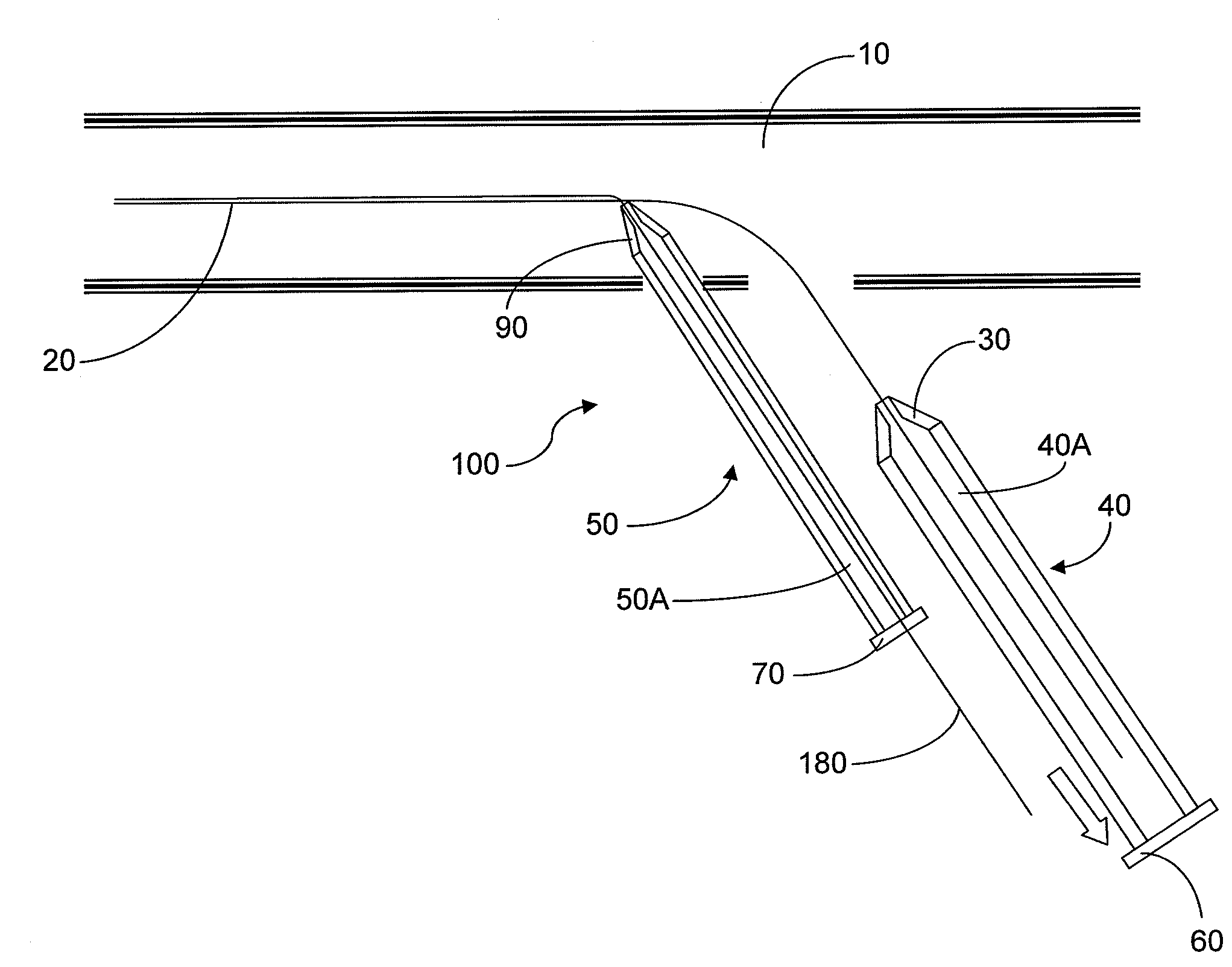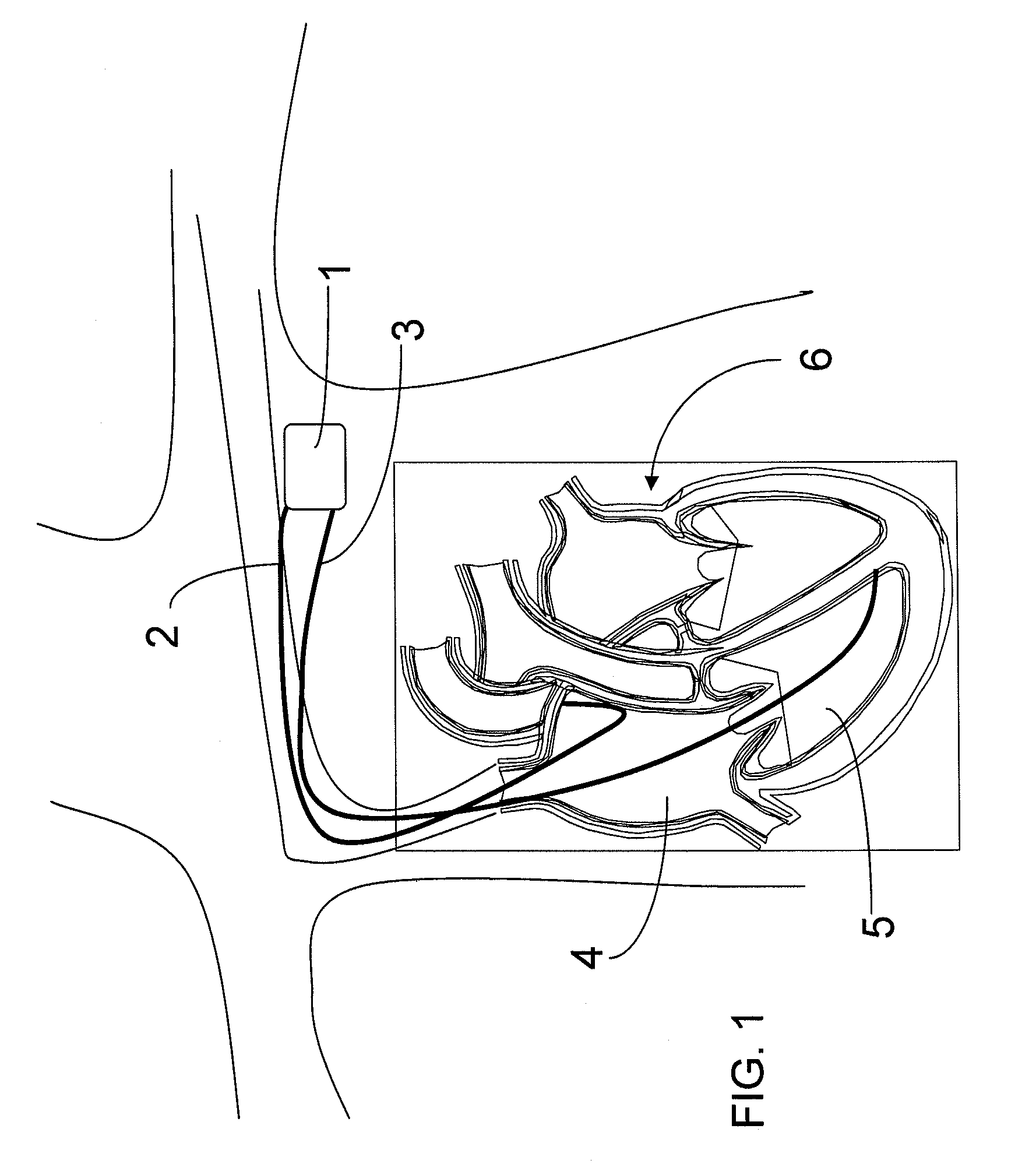Apparatus and Associated Method for Facilitating Implantation of Leads of a Cardiac Pacemaker
a cardiac pacemaker and implantable lead technology, applied in the field of surgical devices, can solve the problems of inability to perform a full-time job, cardiac pacemaker complications, and complex heart beat regulation mechanism damage, and achieve the effect of facilitating the procedurally-required second needle insertion, avoiding or minimizing the risk of inadvertent trauma, and reducing or minimizing the risk
- Summary
- Abstract
- Description
- Claims
- Application Information
AI Technical Summary
Benefits of technology
Problems solved by technology
Method used
Image
Examples
Embodiment Construction
[0032]The present invention now will be described more fully hereinafter with reference to the accompanying drawings, in which some, but not all embodiments of the inventions are shown. Indeed, these inventions may be embodied in many different forms and should not be construed as limited to the embodiments set forth herein; rather, these embodiments are provided so that this disclosure will satisfy applicable legal requirements. Like numbers refer to like elements throughout.
[0033]FIG. 2 schematically illustrates a vein leading to the heart 6, such as the subclavian vein 10. Using, for example, the Seldinger technique, as will be appreciated by one skilled in the art, the subclavian vein 10 may be cannulated with a hollow needle so as to insert a first guide wire 20 therein. Upon removal or withdrawal of the hollow needle, the first guide wire 10 remains within the subclavian vein 10.
[0034]FIG. 3A schematically illustrates a vein preparation apparatus 100 according to one embodimen...
PUM
 Login to View More
Login to View More Abstract
Description
Claims
Application Information
 Login to View More
Login to View More - R&D
- Intellectual Property
- Life Sciences
- Materials
- Tech Scout
- Unparalleled Data Quality
- Higher Quality Content
- 60% Fewer Hallucinations
Browse by: Latest US Patents, China's latest patents, Technical Efficacy Thesaurus, Application Domain, Technology Topic, Popular Technical Reports.
© 2025 PatSnap. All rights reserved.Legal|Privacy policy|Modern Slavery Act Transparency Statement|Sitemap|About US| Contact US: help@patsnap.com



